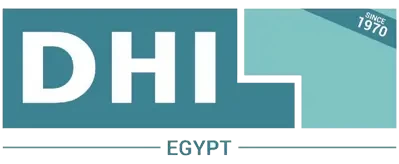It is not necessary for a client to shave his entire head for a DHI session.
FAQ
Most frequently asked questions
-
Can DHI be performed only on shaven hair ?
-
Why is a client required to come for a consultation with DHI consulting doctor?
The DHI Total Care consultant (Consulting Doctor) needs to perform an Alopecia test, examine the donor and recipient area for calculating the total number of hairs from each zone which can be extracted and implanted and accordingly offer the session which should be performed to give the best possible results.
-
How much time does the consultation take?
The consultation process which involves an alopecia test to assess the quality of hair, mathematical calculation to determine the number of hairs which can be extracted and implanted, discussion on hairline design and distribution of approximately 45 minutes.
-
How is DHI different from the rest?
DHI Direct hair implantation is Totally Safe
Being treated by doctors, DHI is applying Standard Operation Protocols to all processes and at all levels, to guarantee 100% safety.
Maximum Viability Guaranteed
Grafts viability rate is above 90%, while the industry’s average is about 50%, as per independent studies.
Only by Doctors
For maximum safety DHI Direct Hair Implantation is performed exclusively by doctors at every stage, trained and certified by the DHI London Hair Restoration Training Academy
Growth for Lifetime
Painless procedure
The DHI hair transplant technique is a tested and standardized method in every step, to ensure maximum patient comfort.
DHI’s Natural Result
For the first time in the history of hair restoration DHI Global Medical Group has established Standard Operating Procedures (SOPs), which apply to all processes and at all levels, to guarantee safety, quality and outstanding results every time.
-
Is it possible for a potential customer to meet/interact with existing customers who have benefited from DHI?
We maintain complete privacy of our clients but we might be able to request a few of our clients to speak with you and share their experience and life after DHI.
-
Why do the implanted hairs not undergo a process of thinning?
The implanted hairs are extracted from the back of the scalp, which is genetically determined to be resistant to the effect of testosterone, and DHT, and hence will never thin out as a result of male pattern baldness.
-
At what stage of hair loss, is a transplant suggested?
Transplantation is suggested as early as stage-1 of the hair loss as hair transplantation is the only way to restore lost hair.
-
What is a bad donor area for hair transplants?
A bad donor area could be: 1. Less area for extraction 2. Thin fragile roots which transects easily 3. Less density of hair
-
What can be the contraindications for hair transplant?
The contraindications of hair transplant could be: 1) Very poor donor area 2) Keloidal tendency 3) Unstable vitiligo or psoriasis 4) Active infection on the donor or recipient area. 5) Alopecia areata 6) Hypertension.
-
What is a body hair transplant? From which body part is a body hair transplant taken?
If your scalp has been damaged from previous strip surgeries or you have an advanced stage of hair loss, we can now move hair follicles from nearly every part of the body such as the back and chest. It is noted that the growth of beard hair is better than body hair. Beard hairs are naturally coarser than other body hairs and therefore, could provide better scalp coverage. Many leading hair restoration physicians also feel that using beard hair is more viable than hair from other parts of the body, which possess even shorter growth cycles.
-
Up to what age can transplants be done?
Hair transplant can be done on clients from 18 – 65 years of age.
-
How do you decide the angle of the hair before implantation?
We usually follow the angle of hair of the existing roots. If not present, we implant the new hair roots at an acute angle.

